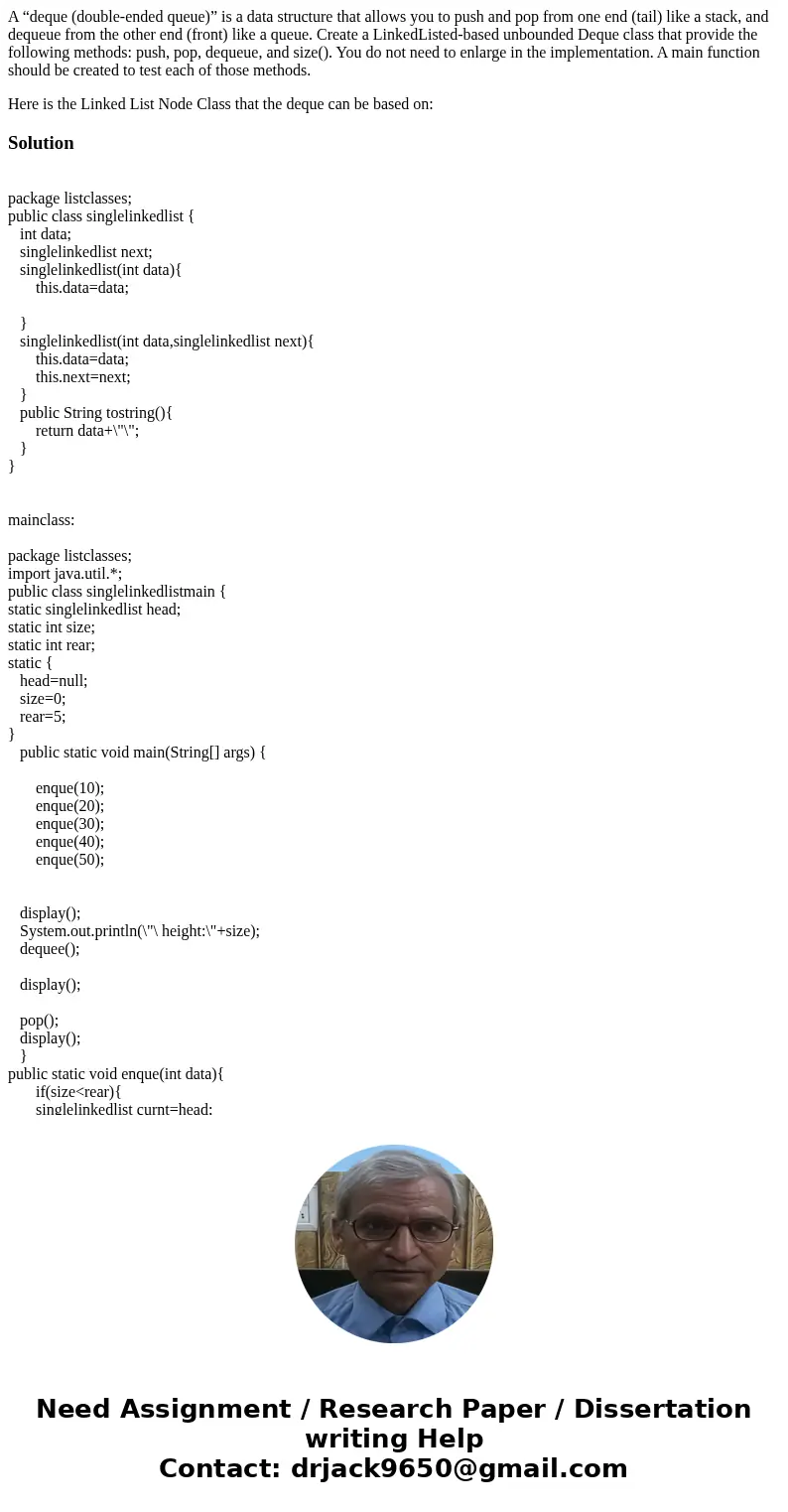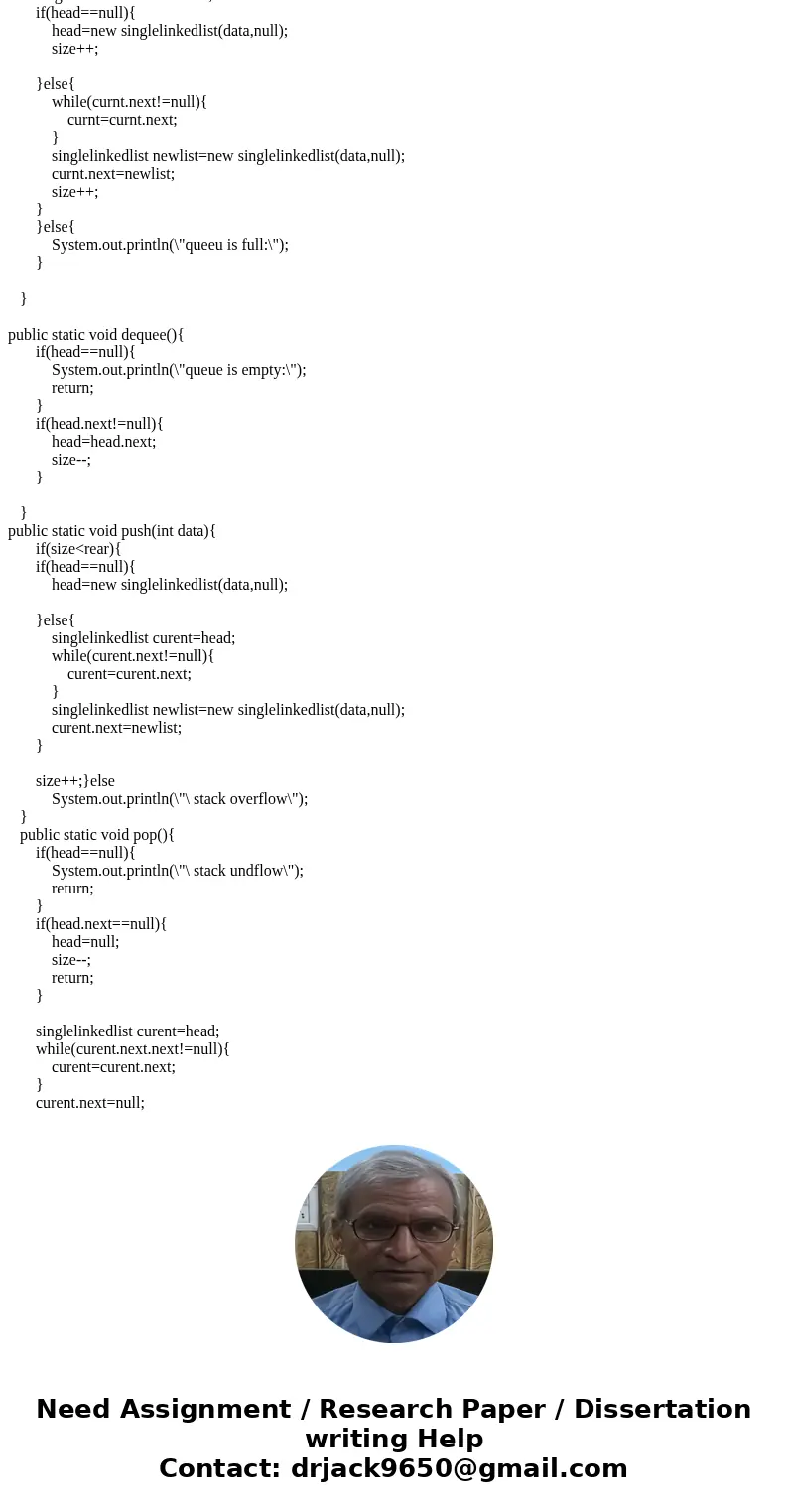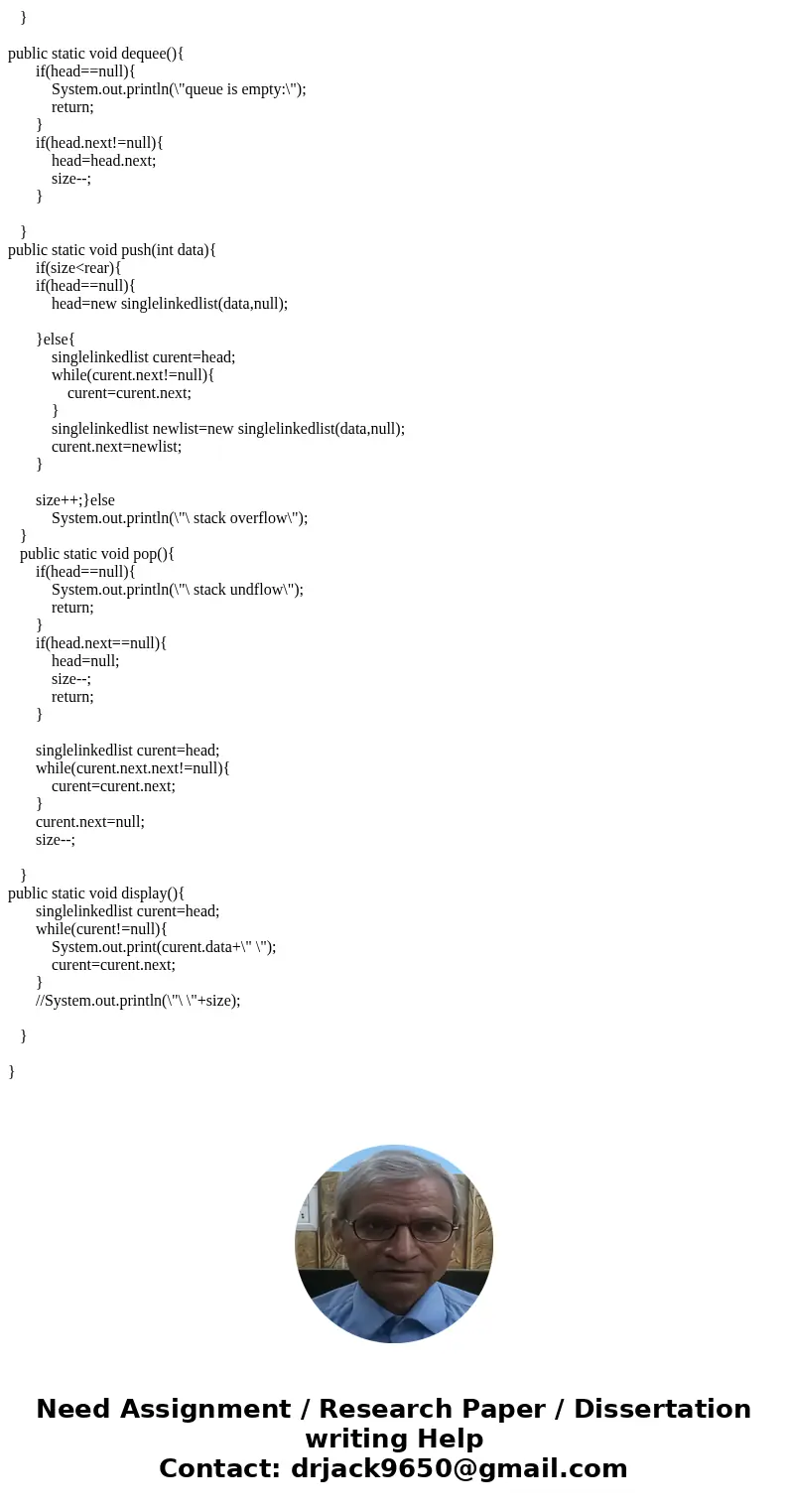A deque doubleended queue is a data structure that allows yo
A “deque (double-ended queue)” is a data structure that allows you to push and pop from one end (tail) like a stack, and dequeue from the other end (front) like a queue. Create a LinkedListed-based unbounded Deque class that provide the following methods: push, pop, dequeue, and size(). You do not need to enlarge in the implementation. A main function should be created to test each of those methods.
Here is the Linked List Node Class that the deque can be based on:
Solution
package listclasses;
public class singlelinkedlist {
int data;
singlelinkedlist next;
singlelinkedlist(int data){
this.data=data;
}
singlelinkedlist(int data,singlelinkedlist next){
this.data=data;
this.next=next;
}
public String tostring(){
return data+\"\";
}
}
mainclass:
package listclasses;
import java.util.*;
public class singlelinkedlistmain {
static singlelinkedlist head;
static int size;
static int rear;
static {
head=null;
size=0;
rear=5;
}
public static void main(String[] args) {
enque(10);
enque(20);
enque(30);
enque(40);
enque(50);
display();
System.out.println(\"\ height:\"+size);
dequee();
display();
pop();
display();
}
public static void enque(int data){
if(size<rear){
singlelinkedlist curnt=head;
if(head==null){
head=new singlelinkedlist(data,null);
size++;
}else{
while(curnt.next!=null){
curnt=curnt.next;
}
singlelinkedlist newlist=new singlelinkedlist(data,null);
curnt.next=newlist;
size++;
}
}else{
System.out.println(\"queeu is full:\");
}
}
public static void dequee(){
if(head==null){
System.out.println(\"queue is empty:\");
return;
}
if(head.next!=null){
head=head.next;
size--;
}
}
public static void push(int data){
if(size<rear){
if(head==null){
head=new singlelinkedlist(data,null);
}else{
singlelinkedlist curent=head;
while(curent.next!=null){
curent=curent.next;
}
singlelinkedlist newlist=new singlelinkedlist(data,null);
curent.next=newlist;
}
size++;}else
System.out.println(\"\ stack overflow\");
}
public static void pop(){
if(head==null){
System.out.println(\"\ stack undflow\");
return;
}
if(head.next==null){
head=null;
size--;
return;
}
singlelinkedlist curent=head;
while(curent.next.next!=null){
curent=curent.next;
}
curent.next=null;
size--;
}
public static void display(){
singlelinkedlist curent=head;
while(curent!=null){
System.out.print(curent.data+\" \");
curent=curent.next;
}
//System.out.println(\"\ \"+size);
}
}



 Homework Sourse
Homework Sourse